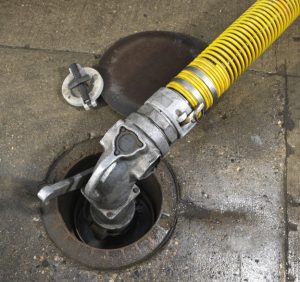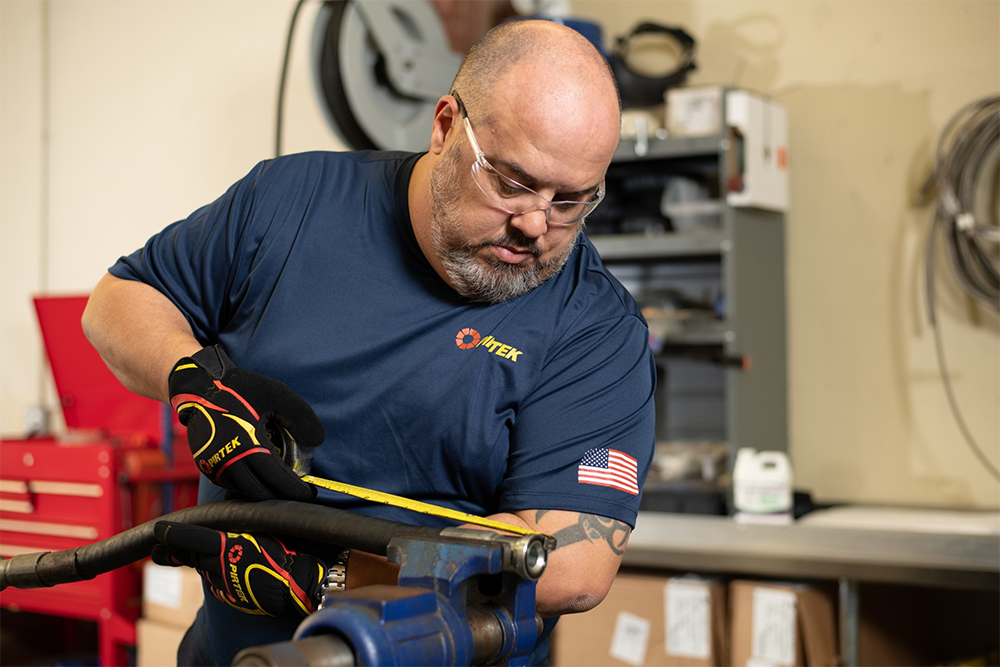Oil suction and delivery hoses play an essensial role in the safe and efficient transfer of oil and other petroleum-based products, serving as the backbone of operations in many industrial industries such as oil and gas, paper and pulp, and logistics. These hoses ensure the integrity and reliability of the transfer process, where even the smallest detail becomes critical for ensuring a perfect seal and overall safety.
With a wide range of industrial sectors heavily dependent on these components, the quality and performance of oil suction and delivery hoses cannot be overstated. This emphasis on quality standards underscores their significance in avoiding operational failures and ensuring safety.
This highlights not only the importance of selecting the right hose for specific operations but also the necessity of regular maintenance and inspection to uphold these quality standards. Therefore, understanding the criticality of these components and adhering to best practices in their selection, installation, and maintenance is paramount.
The Essence of Oil Suction and Delivery Hoses
Oil suction and delivery hoses are engineered to meet rigorous demands, reflecting a blend of durability and performance. These hoses are constructed from high-quality materials such as heavy-duty rubber and composites, which are essential for handling the harsh operational conditions found in various petroleum product applications.
Materials and Construction:
- Tube Material: Typically made from black, smooth NBR rubber, known for its oil resistance.
- Reinforcement: Incorporates high-strength synthetic cord and steel helix wire to enhance structural stability.
- Cover: Consists of black, smooth or corrugated synthetic rubber that is weathering and oil-resistant, ensuring longevity and durability under adverse conditions.
Performance Features:
- Temperature Tolerance: These hoses operate efficiently within a temperature range of -20°C (-4°F) to +70°C (+158°F), with some models accommodating up to +80°C (+176°F) upon request.
- Applications: Designed for the suction and delivery of petroleum products with up to 50% aromatic content, suitable for in-plant, truck, tank, or offshore operations.
- Advanced Features: Many hoses feature enhancements like blue oil-resistant PVC/Nitrile linings and UV-resistant covers, which provide additional protection and extend the hose’s operational life.
By utilizing robust materials and sophisticated construction techniques, oil suction and delivery hoses ensure optimal performance and reliability in transferring petroleum and oil products, crucial for maintaining the efficiency and safety of industrial operations.
Why Quality Matters
High-quality oil suction and delivery hoses are indispensable for ensuring operational safety and efficiency across various industries. The significance of investing in quality hoses is critical, as they directly impact the longevity and reliability of industrial operations. Here are key reasons why quality matters in oil suction and delivery hoses:
Durability and Reliability:
- High-quality hoses are designed to withstand harsh conditions, including high pressures and abrasive materials, crucial for high-pressure and high-volume applications. This robust construction helps prevent leaks, spills, and potential blowouts, which are critical in maintaining workplace safety and environmental standards.
Compliance with Standards:
- Adhering to industry standards such as those set by the American Petroleum Institute and the Rubber Manufacturers Association ensures that hoses meet stringent quality and performance criteria. These standards are in place to guarantee that hoses can handle the specific demands of oil transfer, including resistance to oil and other chemicals.
Cost-Effectiveness:
- While initial costs for high-quality hoses might be higher, they offer greater longevity and reduced maintenance needs. This translates to lower downtime and fewer replacements, ultimately providing better return on investment. Quality hoses also reduce the risk of costly accidents and operational disruptions, underscoring their value in long-term industrial applications.
Incorporating these high standards in the selection and maintenance of oil suction and delivery hoses ensures not only compliance with regulatory requirements but also enhances operational efficiency and safety.
Standards and Certifications

- ASTM D2000 and ISO 3601 set precise specifications for rubber products and O-Rings, crucial for ensuring compatibility and performance in various operational environments.
- API and ISO 9001 standards govern the overall quality management and operational safety, which are essential for reducing costs and enhancing the speed to market.
- Certifications like DNV-GL and KTW ensure that products are safe for critical applications, such as maritime safety and drinking water systems, respectively.
Each certification and standard mentioned is backed by rigorous testing and documentation, underscoring a commitment to quality and reliability in the production and application of oil suction and delivery hoses. This adherence not only meets but often exceeds regulatory requirements, ensuring optimal performance across a wide range of industrial and environmental conditions.
Maintenance and Inspection Best Practices
To ensure the longevity and optimal performance of oil suction and delivery hoses, adhering to best practices for maintenance and inspection is crucial. These practices not only prolong the life of the hoses but also safeguard against potential operational hazards.
Regular Inspection and Testing:
- Conduct visual inspections for signs of wear, damage, or degradation before each use.
- Implement a Hose Inspection and Test Plan to routinely check hose integrity, focusing on internal and external conditions, and ensure hydrostatic testing for recoupled hoses.
- Inspections should include checking for corrosion, ensuring proper fit and seal in fittings, and verifying the absence of bubbles, leaks, or twisting.
Proper Maintenance and Handling:
- Store hoses in a cool, dry, and clean environment, shielded from direct sunlight, ozone, and artificial light, which can degrade materials.
- Follow proper hose routing guidelines to avoid damage from abrasion, heat, and vibration, and use appropriate clamps or restraints to secure the hose during operations.
- Ensure that hoses are not subjected to tight bends or kinks, and use suitable elbows and nipples to prevent sharp bends at couplings.
Safety Precautions:
- Adhere to the hose assembly’s maximum working pressure and smallest bend radius to avoid over-stressing the hose.
- Ensure proper grounding of the hose when transferring flammable liquids to prevent static buildup.
- Regularly train employees on identifying unsafe hose conditions and the correct use of personal protective equipment (PPE) when handling chemicals.
Selecting the Right Hose Material
Selecting the right material for oil suction and delivery hoses is crucial for ensuring durability, efficiency, and safety in various industrial applications. Here’s a detailed look at the options available and their specific benefits:
- PVC Hoses: Known for their light weight and flexibility, PVC hoses are suitable for indoor, light-duty operations. They are available in various forms such as phthalate-free, oil-resistant, and food quality, making them versatile for different environments. However, they may not be ideal for outdoor use due to UV sensitivity.
- Rubber and Thermoplastic Hoses: Rubber hoses offer excellent flexibility and high resistance to abrasion, making them ideal for hydraulic systems. Thermoplastic hoses, while also flexible and abrasion-resistant, generally have lower durability and temperature tolerance compared to rubber.
- Specialized Materials:
- Polyurethane Hoses: Best for heavy-duty applications, these hoses are robust, suitable for industries like mining and agriculture.
- Neoprene and Silicone Hoses: These materials are highly versatile, with neoprene performing well in extreme temperatures and silicone ideal for high-temperature applications due to its ability to maintain shape and integrity.
- Coated Fabric Hoses: These are used in extreme temperature environments, offering flame resistance and durability.
When choosing a hose material, factors such as the specific oil and chemical compatibility, operational temperature, pressure conditions, and the physical environment must be considered to select the most appropriate hose for the task.
Ensuring Proper Installation and Maintenance
Ensuring the proper installation and maintenance of oil suction and delivery hoses is vital for their optimal function and longevity. One critical step in this process is the meticulous examination of the hose’s markings and identification prior to purchase. These markings provide essential information that helps in selecting the correct hose for specific applications and conditions.
- Size and Ends: Verify that the hose dimensions and end fittings are compatible with the existing equipment and setup.
- Intended Application: Ensure the hose is suitable for the type of oil or chemical it will transport, considering factors like oil resistance and maximum pressure.
- Temperature and Pressure Ratings: Check that the hose can operate effectively within the operational temperature and pressure ranges of the system.
- Material Limitations: Understand any restrictions related to the hose materials, such as compatibility with certain chemicals or environmental conditions.
By closely adhering to these identification markers, users can significantly reduce the risk of operational failures, enhance safety, and extend the service life of the oil suction and delivery hoses.
Potential Risks of Substandard Hoses
The use of substandard hoses can lead to significant risks, affecting both operational efficiency and safety. Here are the potential risks associated with using hoses that do not meet industry standards:
- Increased Operational Failures: Hoses that are not up to standard may fail under pressure, leading to leaks or bursts. This not only causes disruptions in operations but can also result in significant financial losses due to downtime and repair costs.
- Safety Hazards: The failure of substandard hoses can pose serious safety risks, including fires and spills. Such incidents jeopardize the safety of personnel and have the potential to cause environmental damage, which could lead to hefty fines and legal actions against the company.
- Reduced Equipment Lifespan: Using inferior hoses can lead to frequent replacements and increased maintenance costs. Substandard hoses may not be designed to handle specific pressures or chemical exposures, leading to premature wear and tear of both the hoses and the associated machinery.
Conclusion
Recognizing the importance of quality standards for oil suction and delivery hoses is more than an operational necessity—it’s a commitment to safety and efficiency. At PIRTEK USA, we don’t just meet these standards; we strive to exceed them with every product and service we offer. Our comprehensive selection of oil suction and delivery hoses provides superior performance under the most demanding conditions, ensuring that your operations maintain continuous fluidity and reliability. To see the full range of our high-quality hoses, and to find solutions that best fit your needs, explore our digital catalog or visit our locations page to connect with a PIRTEK expert near you. Ensure your equipment operates at its best with hoses that uphold the highest industry standards.


